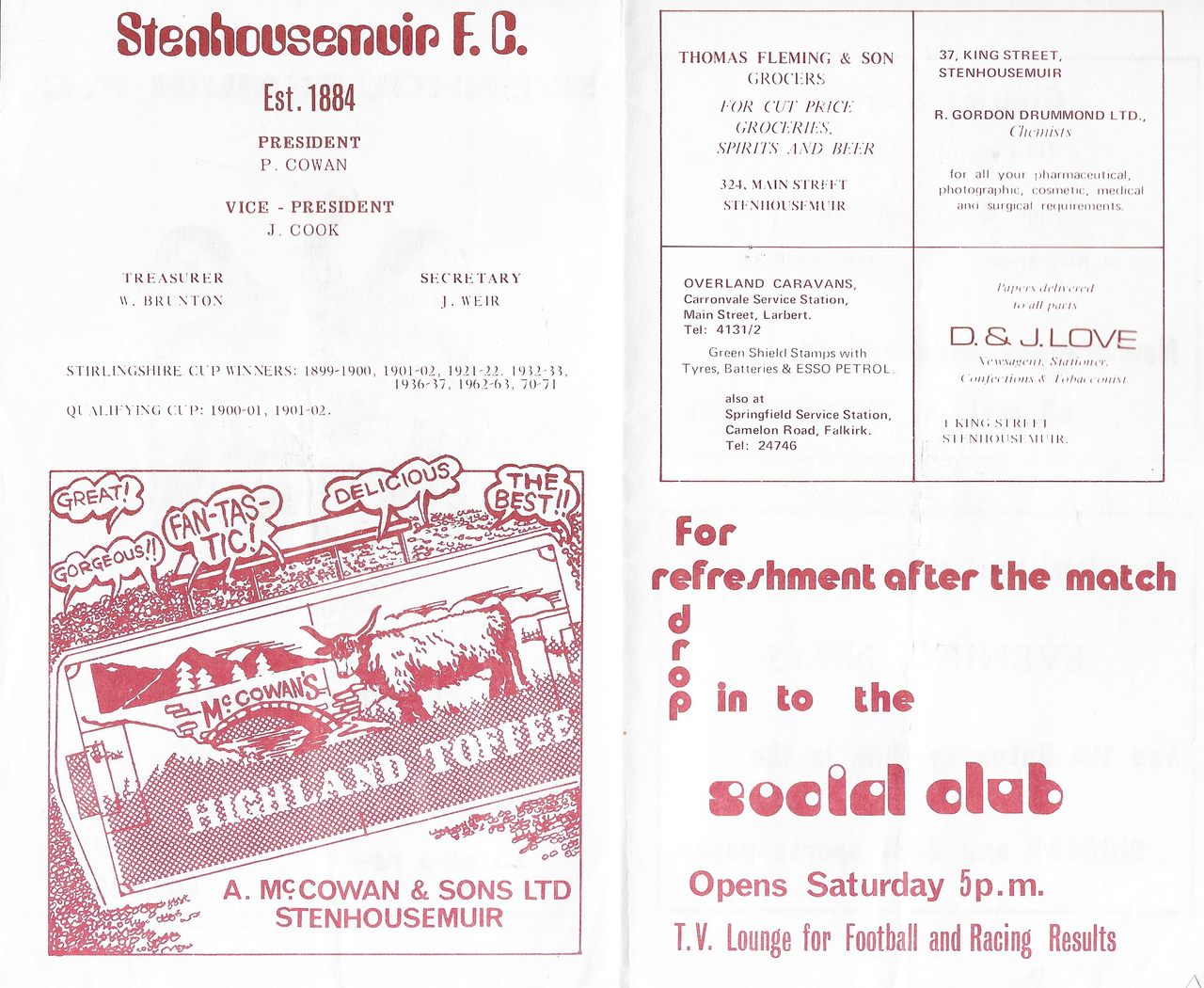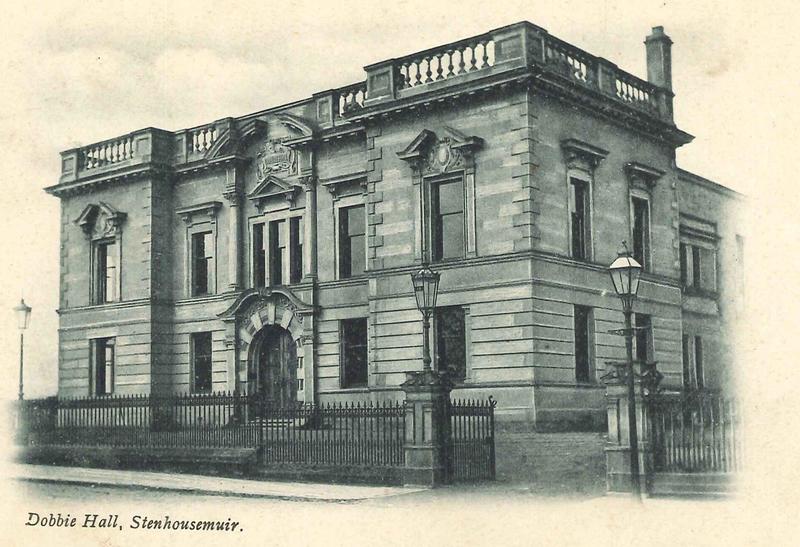Iain Murray recalls growing up near McCowan’s toffee factory in Stenhousemuir. He explains the connections between the local cinema and the second world war, and how accidents often happened near McCowan’s toffee factory…
Cinema & World War II
I’m almost embarrassed to say that I regularly visited the Palace cinema, locally known as the Fleapit, in the early 1960s, and each visit was normally followed by a visit to a local chip restaurant that had table juke boxes at each booth. This was a great treat for yours truly, as friends of my Father would take me, and it felt like a very grown-up thing to do. According to CinemaTreasures.com the Palace Cinema in Stenhousemuir was unlisted in 1914 but was recorded in the 1927 Kinematograph Yearbook. Having read through newspapers in searches for this piece, I have found regular references to a cinema from earlier years, using the same name. The cinema appears to have played an important part in the life of the village and the presentations were regularly praised in the local press.
During the First World War there were many efforts to raise money for home comforts for soldiers on the front and for those invalided as a result of injuries in battle, and there were regular charity appeals to the cinema audiences. The Falkirk Herald (4 September 1915) describes Heather Day of that year when sprigs of white and purple heather were supplied in return for donations to the Scottish branch of the NSPCC. The event was organised by the Larbert branch of the Children’s League of Pity. In the evening the manager of the Picture Palace, Mr Tom Bishop, permitted a Mr Miller to make a plea from the stage while a collection box sent round the audience raised 12 shillings (or £1 12 shillings, it is unclear).
The Falkirk Herald (6 November 1915) announced the scheme by the cinematograph trade to raise the sum of £30,000 in order to present to the country a complete motor ambulance convoy to be used at the front comprising fifty ambulances, four motor cars, one repair wagon and two motorcycles. November 9th was set aside and every cinema in the country used different methods to raise funds on that day.
The Larbert Tanks
In April 1918, some six months before the end of the war, the people of Larbert and Stenhousemuir had been set a task to raise £25,000, the cost of 5 tanks that became known as the Larbert Tanks. This sum was raised through the sale of War Bonds and Certificates, and purchasers were able to participate in prize draws using their purchase certificates. In Mr Faulkner’s Palace Cinema, a verse written by one of the local Justices of the Peace was displayed on the screen which read;
Said little Will to Kaiser Bill,
I swear Prince Albert,
If British money turns the scale,
I’ll blame it all on Larbert.
fields['text']) echo $section->fields['text']; ?>
A couple of days later, the local schoolchildren were given an afternoon off school so that they could witness a squadron of aeroplanes that were due to fly over the Tryst and drop discs that could be worth up to fifteen shillings to the lucky finder. Three hours afterwards, the planes had failed to appear, and the crowd dispersed.
Harry Lauder’s son was killed at the front in France in 1916, he was a Captain with the Argyle and Sutherland Highlanders. This was also my grandfather’s regiment, and he served and survived the whole war, starting as a Private and finishing his service as a Sergeant Major. Lauder set up the Million Pound Fund to provide support for soldiers coming back from the war, was aimed solely at soldiers from Scottish regiments. The councils in the local area chose to donate monies to this fund in preference to the Kings Fund which gave to soldiers throughout Britain.
Fire & Injury
Finally, I would like to highlight the risk of fire and injury in Stenhousemuir, particularly near to McCowan’ premises. In 1915, a gunner called Muir was detaching a gun carriage from its horses, at Ochilview, when one of the animals lashed out with its rear leg and struck his face just below the eye (Falkirk Herald 4 September). He was knocked unconscious but following treatment and rest, he was able to return to duties the following day. In 1968, I was knocked out when a youth threw an empty steel can, full of water from the burn behind McCowan’s factory, which struck me on the head. A visit to the local hospital and a few sutures and I was able to go back to school the next day.
There was a fire at McCowan’s premises in April 1925 which destroyed the premises and made 80 workers redundant (Western Daily Press). In 1928, the grandstand at Stenhousemuir’s Ochilview was destroyed by fire (Dundee Courier 3 April). The stadium was McCowan’s neighbour, and access for the fire brigade would have been along Gladstone Road. The grandstand was replaced and reopened in 1929, but it was found at the opening that the designer had forgotten to add any access to the structure, so two external sets of stairs had to be retrospectively fitted!
A 1936 story from the Scotsman has me intrigued and determined to discover more. The correspondent describes a court case at Falkirk Sheriff Court where three men from Glasgow; Walker, Rennie and Livingstone were found guilty of possession of explosives in Falkirk and in Gladstone Road Stenhousemuir, near to the premises of Mr McCowan. They were prosecuted by Mr J. Morrison who was the Procurator Fiscal and charged under the Explosive Substances Act. Their sentence was four months imprisonment. I intend to check legal case databases to determine if more information is available…
By Iain Murray, Great Place volunteer.

